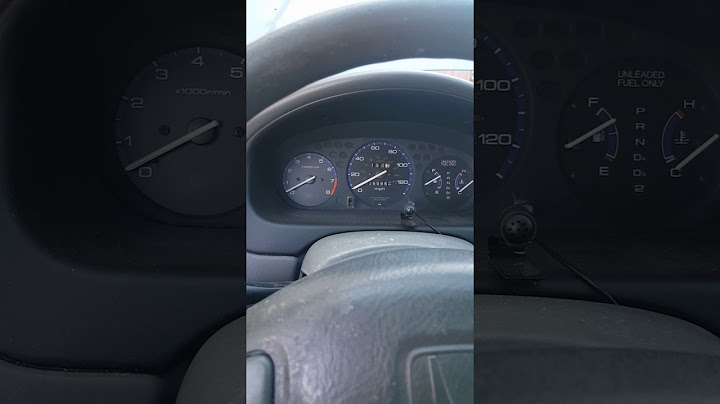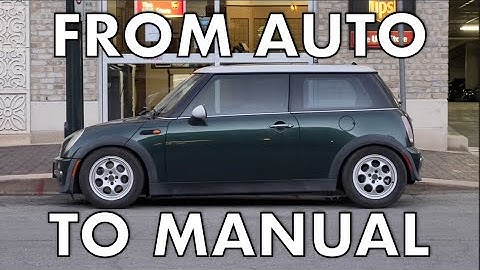Document CSAH1215AC Split Air ConditionerSplit Air Conditioner CONTENTS PRODUCT REGISTRATION Thank you for purchasing our Commercial Cool product. This easy-to-use manual will guide you in getting the best use of your split AC. Model number Serial number Date of purchase Staple your receipt to your manual. You will need it to obtain warranty service. Page 3 SAFETY INFORMATION DANGER WARNING CAUTION IMPORTANT SAFETY INSTRUCTIONS WARNING · Read this guide before installing and using the appliance. · All electrical connections, wiring and installation should be performed by Page 4 SAFETY INFORMATION SAFETY
INFORMATION SAFETY INFORMATION SAFETY INFORMATION SAFETY INFORMATION OPERATING CONDITIONS · Within the temperature range provided in following table, the air conditioner may stop running and other anomalies may arise. Cooling Heating Outdoor Indoor Outdoor Indoor > 109.4°F (Apply to T1) > 125.6°F (Apply to T3) < 64.4°F > 75.2°F < 19.4°F > 80.6°F · When the temperature is too high, the air conditioner may activate the automatic protection
device, so that the air conditioner could be shut down. NOTES FOR HEATING Page 9 SET UP
& USE INSTALLATION INSTRUCTIONS PARTS & FEATURES INDOOR UNIT Air Inlet Grill Air Inlet Panel Force Switch Air Filter Air Outlet OUTDOOR UNIT Pipe Protection Air Outlet Grill Refrigerant Pipe 157.5 inches Air Outlet Condensate drain Insulation sleeve Page 11 INSTALLATION INSTRUCTIONS INSTALLATION INSTRUCTIONS INDOOR UNIT INSTALLATION Space to the wall 7.9 inches Space to the wall 7.9 inches Space to the floor 78.7 inches 1. Select an unobstructed location on your interior wall to mount the indoor unit. INSTALLATION INSTRUCTIONS INSTALLATION INSTRUCTIONS INSTALLATION INSTRUCTIONS INSTALLATION INSTRUCTIONS INSTALLATION INSTRUCTIONS INSTALLATION INSTRUCTIONS 6. Check the electrical connections on the indoor unit. Refrigerant pipe Drain Hose and Cables Refrigerant pipe Drain Hose and Cables Fig. 1 Outlet material preparation Fig. 2 WARNING – All interior wiring must be compliant articles 200-300 of NEC. Page 19 INSTALLATION INSTRUCTIONS OUTDOOR UNIT ELECTRICAL DISCONNECT POWER FLOW AC MAINS LIQUID TIGHT NON-METALLIC CONDUIT INDOOR UNIT TO INDOOR UNIT LNG S VIEW OF ELECTRICAL CONNECTIONS AT UNIT OUTDOOR Page 20 FROM DISCONNECT INSTALLATION INSTRUCTIONS INSTALLATION INSTRUCTIONS INSTALLATION INSTRUCTIONS OUTDOOR UNIT INSTALLATION INSTALLATION INSTRUCTIONS INSTALLATION INSTRUCTIONS INSTALLATION INSTRUCTIONS To Power To Power To Power To Power NOTE: Page 26 INSTALLATION INSTRUCTIONS INSTALLATION INSTRUCTIONS Quick Connectors Sound Deadening Pads (Not included) NOTE: All the illustrations in this manual are for explanation purpose only. Your air conditioner may be slightly different. The actual shape shall prevail. They are subject to change without notice for future improvement. Connecting the Refrigerant Pipe to Indoor Unit · Do not remove the plastic seals from the indoor equipment and the appropriate refrigerant pipe until immediately before you connect them. INSTALLATION INSTRUCTIONS INSTALLATION INSTRUCTIONS INSTALLATION INSTRUCTIONS INSTALLATION INSTRUCTIONS Wrap the Piping 1. Use the insulation sleeve to wrap the joint part the indoor unit and the refrigerant pipe, and then use the insulating material to pack and seal insulation pipe, to prevent generation of condensate water on the joint part. 2. Connect the water outlet with drain hose, and make the refrigerant pipe, cables, and the drain hose straight. 3. Use plastic cable ties to wrap the refrigerant Refrigerant Pipe Drain Hose and Cables pipes, cables and drain hose. Run the pipe sloping downward shown in the following table. CAUTION The conical ring on the valve has an important sealing
function together with the sealing seat in the caps. Ensure that you do not damage the cone and that you keep the cap free of dirt and dust. Market Sampling Test Guidelines Page 32 INSTALLATION INSTRUCTIONS INSTALLATION INSTRUCTIONS INSTALLATION INSTRUCTIONS REMOTE CONTROL
INSTRUCTIONS REMOTE CONTROL INSTRUCTIONS HANDLING ALKALINE BATTERIES 1. NEVER mix alkaline, standard
(carbon-zinc), rechargeable (nickel-cadmium) batteries with this product. HOUSEHOLD USE ONLY Page 37 REMOTE CONTROL INSTRUCTIONS 8 1 9 2 10 3 11 4 12 5 13 6 7 NOTE:
The remote control displays all symbols during power-on and only those corresponding to current operation the rest of the time. REMOTE CONTROL INSTRUCTIONS 1. ON/OFF · Press this button to turn on/off the unit. 2.°C/°F · Press this button to set the temperature display to Fahrenheit, which NOTE: Temperature display in Fahrenheit is not available for some models. When temperature is displayed in Fahrenheit on the remote control, it might be in Celsius on the unit, the function and operation of which will not be affected. 3. SPEED · Press this button, you can select the fan speed as follows: NOTE: AUTO air speed is not available in FAN mode. 4. DISPLAY · Press this button to turn on/off the display.
This is for the convenience 5. iFEEL · Press this button on the remote control to turn on the iFEEL 6. TIMER · With the unit ON, press this button to set OFF timer or with it OFF to set ON
timer. · Press this button once, an “ON(OFF)”will flash. Press” ” or ” ” to set an interval of 0.5 hour if less than 10 hours or 1 hour if longer than 10 hours, and a range of 0.5-24 hours. · Press it again to confirm the setting the “ON (OFF)” will stop flashing. · If the timer button is not pressed longer than 10 seconds after the “ON (OFF)” start flashing, the timer setting will be exited. · If a timer setting is confirmed, pressing this button again will cancel it. NOTE: When an ON timer is set, all function buttons (except SLEEP, DISPLAY, and iFEEL can’t be set) are valid and when the ON time set is up, the unit will operate as preset. Page 39 REMOTE CONTROL INSTRUCTIONS REMOTE CONTROL INSTRUCTIONS REMOTE CONTROL INSTRUCTIONS REMOTE CONTROL INSTRUCTIONS TEST OPERATION Check after Installation Test Operation Test Operation preparation · Verify that all piping and connection cables are well connected. · Confirm that the valves at the gas side and the liquid-side are fully open. · Connect the power cord to an independent power socket. · Install batteries in remote control. Test Operation method 1. Turn on the power and push the ON/OFF switch button of the remote control to start the air conditioner. 2. Select COOL, HEAT(not available on cool-only models), SWING and other operation modes with the remote control and see if the operation is ok. WARNING Connector board, and is positioned as shown. Page 44 CLEAN & CARE CLEAN & CARE TROUBLESHOOTING & WARRANTY TROUBLE POSSIBLE CAUSE Air conditioner can not operate at all. · Has the power been shut down? · Is the wiring loose? · Is voltage too high or too low ? Remote control is not available. · Is the remote control out of effective distance to the indoor unit? Indoor unit does not operate Immediately when the air conditioner is restarted. If the air conditioner is turned on immediately after it is turned off, the protective delay switch will delay the operation for 3 to 5 minutes. There is unusual smell blowing from the outlet after operation is started. The air conditioner itself does not have an undesirable odor. If there is an odor, it may be due to accumulation of the odor in the environment. Please clean the air filter or activate the cleaning function. There is sound of running water during the running of air conditioner. Sometimes the “hissing” sound of running A slight “click” sound is heard at the of start-up or shut-down. Due to temperature changes, panel and other parts will swell, causing the sound of friction. This is normal, not a fault. During the cooling operation, the indoor unit outlet sometimes will blow out mist. This is because the indoor air is cooled rapidly. After it runs for some time, the indoor temperature and humidity will be reduced and the mist will disappear. WARNING – Immediately stop all operations and turn off the power supply, contact a Service center locally in following situations. · Shrill sound is heard or an unpleasant odor is emitted during the operation. · There is an abnormal heat in power supply cord and power plug. · Accidentally pour impurities or water into the machine or the remote control. · Air switch or protection switch often breaks. Page 47 TROUBLESHOOTING & WARRANTY TROUBLESHOOTING & WARRANTY LIMITED WARRANTY Any repair, replacement, or warranty service, and all questions about this product should be directed to Commercial Cool at 844-299-0879 from the USA or Puerto Rico. REPAIR OR REPLACEMENT AS PROVIDED UNDER THIS WARRANTY IS THE EXCLUSIVE REMEDY OF THE CUSTOMER; W APPLIANCE CO. SHALL NOT BE LIABLE FOR ANY
INCIDENTAL OR CONSEQUENTIAL DAMAGES FOR BREACH OF ANY EXPRESS OR IMPLIED WARRANTY ON THIS PRODUCT, EXCEPT TO THE EXTENT PROHIBITED BY APPLICABLE LAW. ANY IMPLIED WARRANTY OF MERCHANTABILITY OF FITNESS FOR A PARTICULAR PURPOSE ON THIS PRODUCT IS LIMITED TO THE DURATION OF THE WARRANTY. Page 49 © 2021 W Appliance Company. All Rights Reserved. 1356 Broadway, New York, NY 10018 Page 50 March 2021 Documents / ResourcesHow do I set the temperature on my Haier portable air conditioner?Haier - Portable Air Conditioner Fahrenheit to Celsius
To change the temperature from Fahrenheit to Celsius: Press and hold the Temperature + and Temperature - buttons simultaneously for 5 seconds to toggle between F and C mode. Hold the bottoms together until the display starts blinking, then switch modes.
|

Related Posts
Advertising
LATEST NEWS
Advertising
Populer
Advertising
About

Copyright © 2024 en.frojeostern Inc.


















